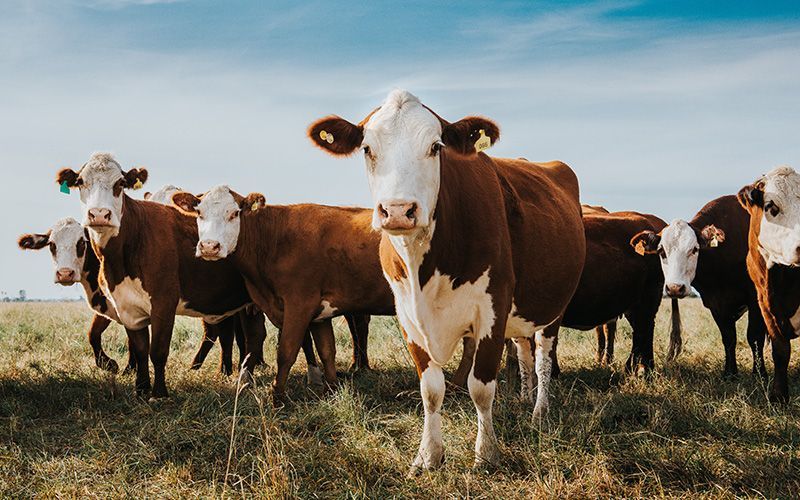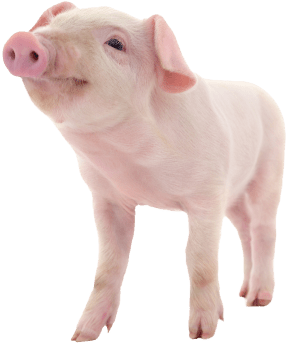
Hardware Disease in Cattle: A Guide to Diagnosis & Treatment
|
|
Time to read 3 min
 You are being redirected to QC Supply Pharmacy, where you’ll find a wide selection of high-quality prescription and pharmaceutical products for animals of all sizes.
Enjoy the same great service and expertise you trust from QC Supply.
Click below to continue shopping.
Continue
No thanks, stay on the main site
Powered by
You are being redirected to QC Supply Pharmacy, where you’ll find a wide selection of high-quality prescription and pharmaceutical products for animals of all sizes.
Enjoy the same great service and expertise you trust from QC Supply.
Click below to continue shopping.
Continue
No thanks, stay on the main site
Powered by


|
|
Time to read 3 min
Hardware disease is a common term used for traumatic reticuloperitonitis in cattle. It occurs when the animal is pierced in the stomach wall by a sharp object swallowed while grazing. Since it is not unusual for cattle to swallow foreign material, such as sharp pieces of wire cast off from a baler, 55% to 75% of cattle have hardware in the reticulum. This can be common, as cattle aren’t big chewers when eating and don’t use their lips to detect inedible material like metal or wire.
Instead, they use their tongue to swallow with little need for chewing, increasing the risk of foreign object ingestion in cattle. Experienced cattle farmers know it’s important to search for and recognize the signs of hardware disease in cattle. Here we look at hardware disease symptoms, diagnosis, and prevention within your herd.
Hardware disease in cattle occurs when sharp objects perforate the reticulum, organs, or heart cavity. The reticulum is the cattle forestomach's first chamber located below the esophagus's bottom. Because metal is heavy, metal objects fall to the bottom of the reticulum and can’t be moved through the gastrointestinal tract. The lining of the reticulum is like a honeycomb with little compartments perfect for trapping items such as wire or metal castoffs.
As the reticulum contracts, it can force the metal to pierce the lining, leading to infection. In the worst-case scenario of bovine hardware disease, the heart sac is punctured, causing death for the cow. Since the heart is located beside the reticulum, it is vulnerable to damage if the contractions force the object through the diaphragm and into the sac.
When the sharp object punctures the stomach wall, it causes the following symptoms of hardware disease in cattle:
If you notice an animal displaying these symptoms, you can try a simple test to help confirm your suspicion. Pinch the withers of the animal to see if it lowers its body. This is a natural reflex in healthy cattle. However, if the animal doesn’t react in this way, it’s likely it has an issue and is avoiding the pain of lowering itself. It is important to seek a diagnosis as soon as possible if you notice any of these symptoms.
The vet typically performs the following tests to confirm hardware disease in cattle:
It is important to diagnose diseases in cattle as soon as possible to reduce risk to the rest of the herd. Although bovine hardware disease is not contagious in the traditional sense, the fact a member of the herd swallowed a metallic foreign object means there could be more of these castoffs in the environment, placing other cattle at risk.
“Cow magnets” are commonly used to hold metal objects in place, reducing the risk of punctures. They prevent swallowed metal objects from traveling through the body or moving and puncturing the stomach wall, heart cavity, or organs. Vets often check for the presence of cow magnets for hardware disease using a compass before performing tests.
Vets recommend the following treatments for bovine hardware disease:
Removing debris or foreign bodies from your pastures can greatly reduce the risk of hardware disease in cattle. Also, when mixing feed or chopping hay, remove wires and metal objects so they aren’t chopped up and fed to the cattle.
On rare occasions, the magnet could lodge in the stomach or intestines. In this case, cow magnet removal is necessary using one of the following methods:
Although there are high occurrences of hardware disease in cattle, using cow magnets can help keep swallowed metal pieces in place. Maintaining clean pastures and removing wire from baling and other food sources will also reduce risks.
If you need further assistance, give our staff a call at 888-433-5275. Did we miss any important maintenance points? Tell us in the comments section.